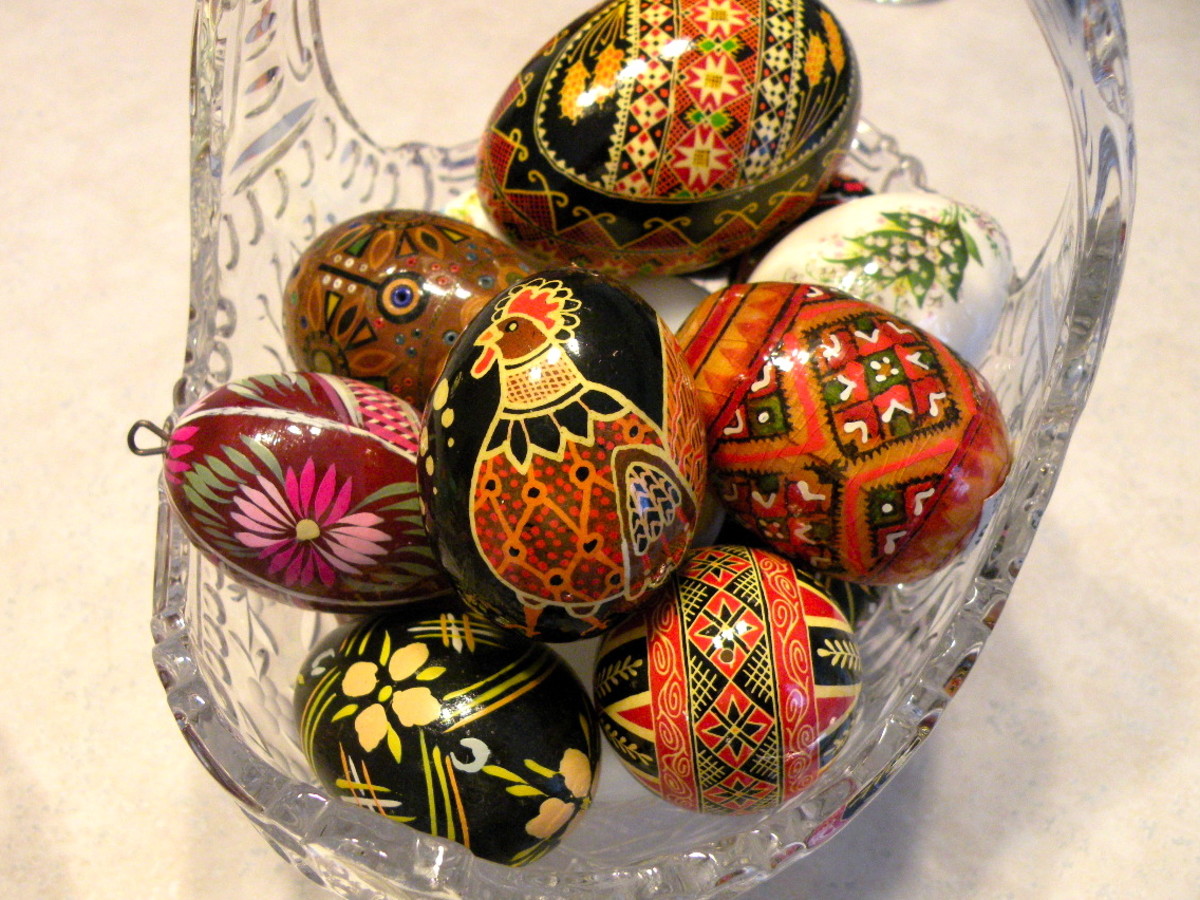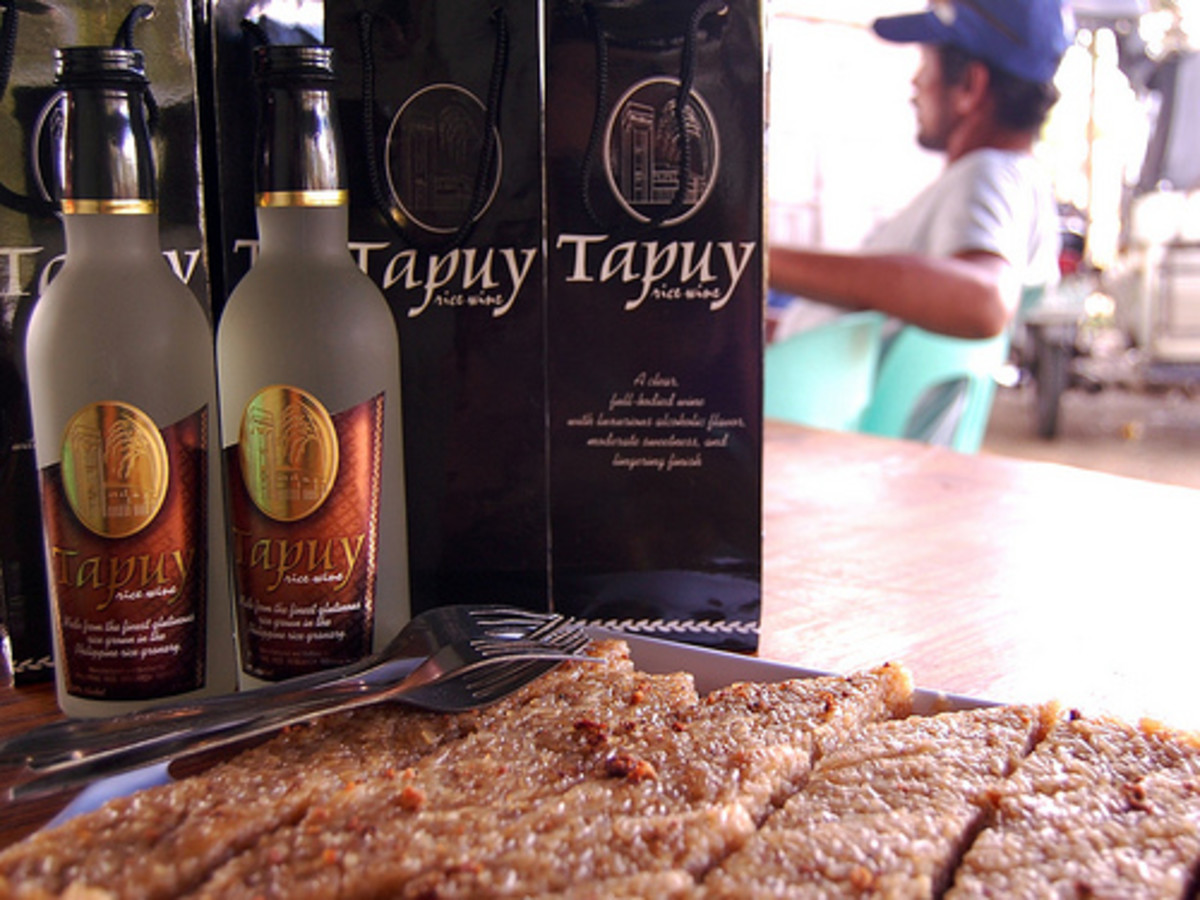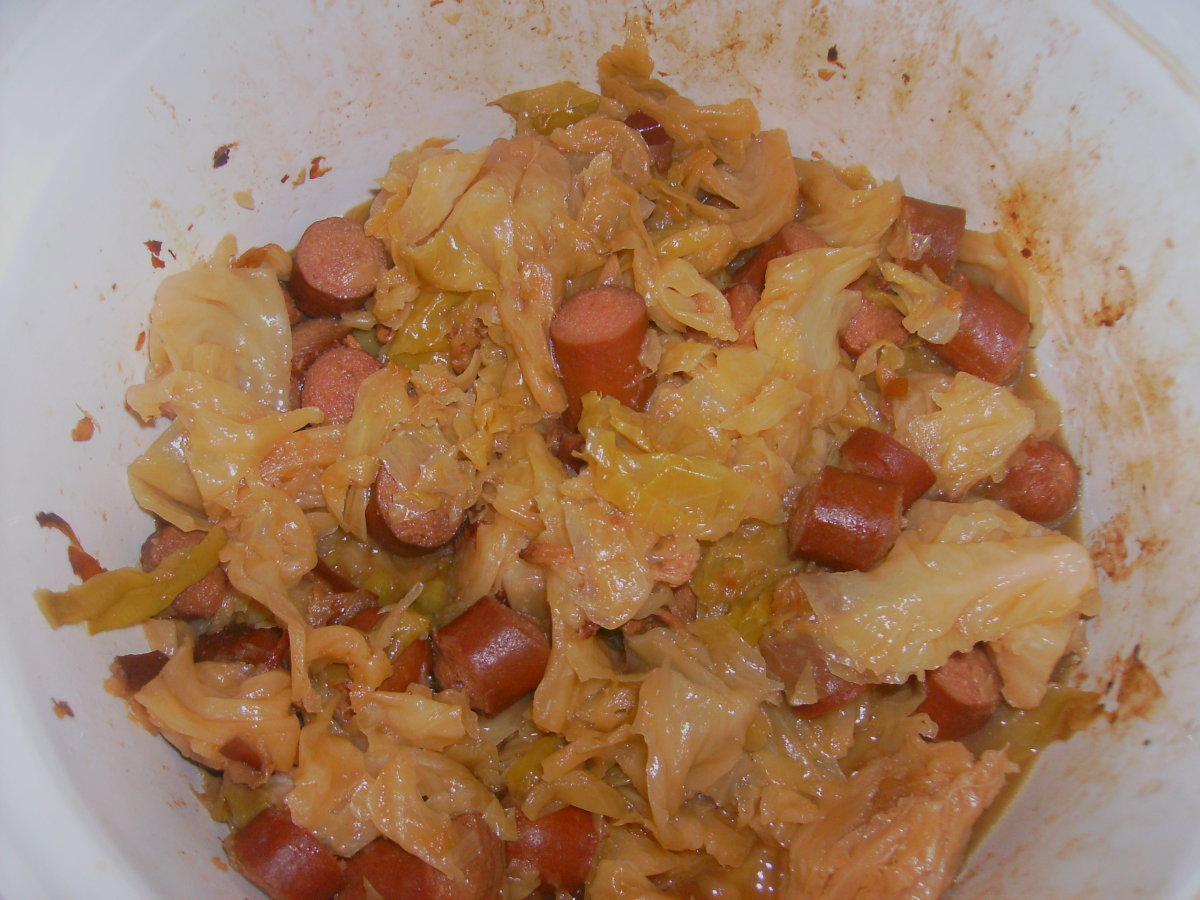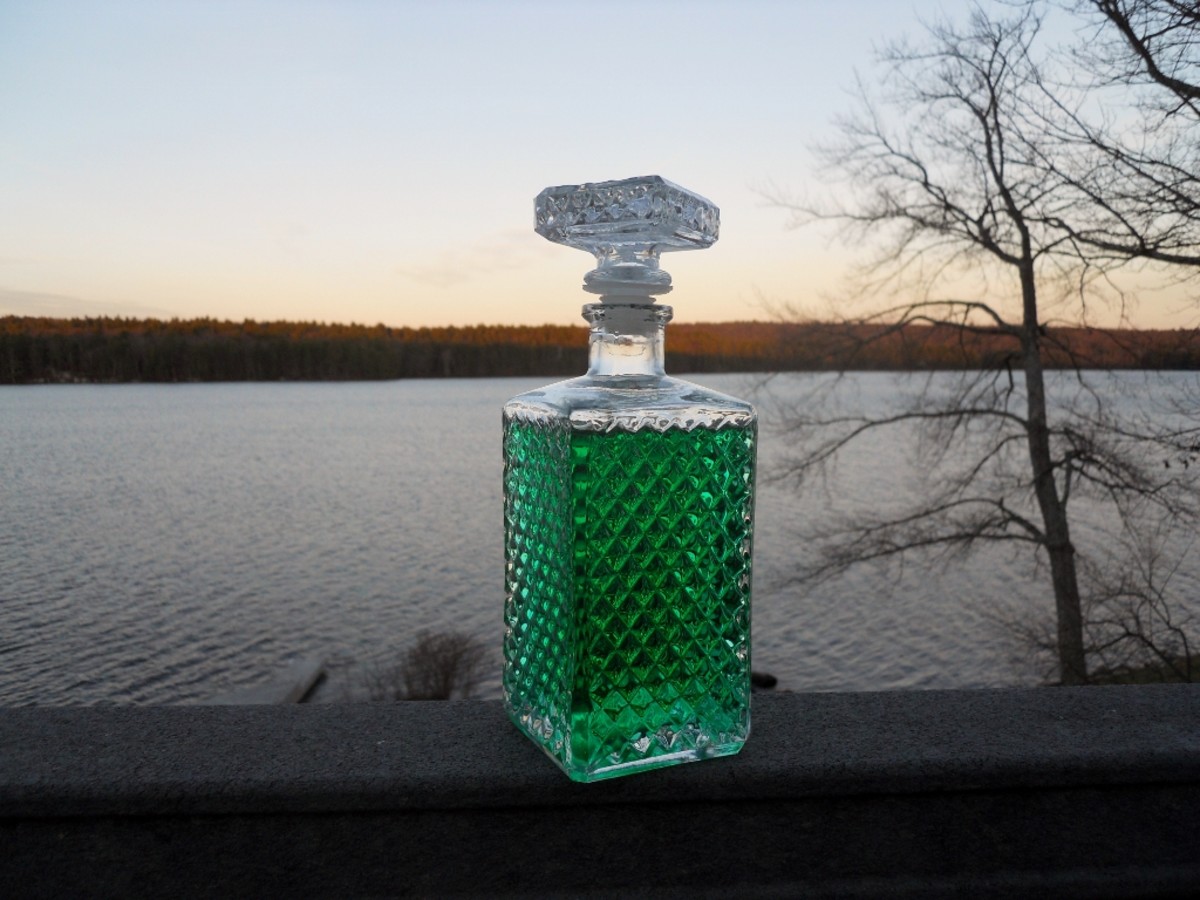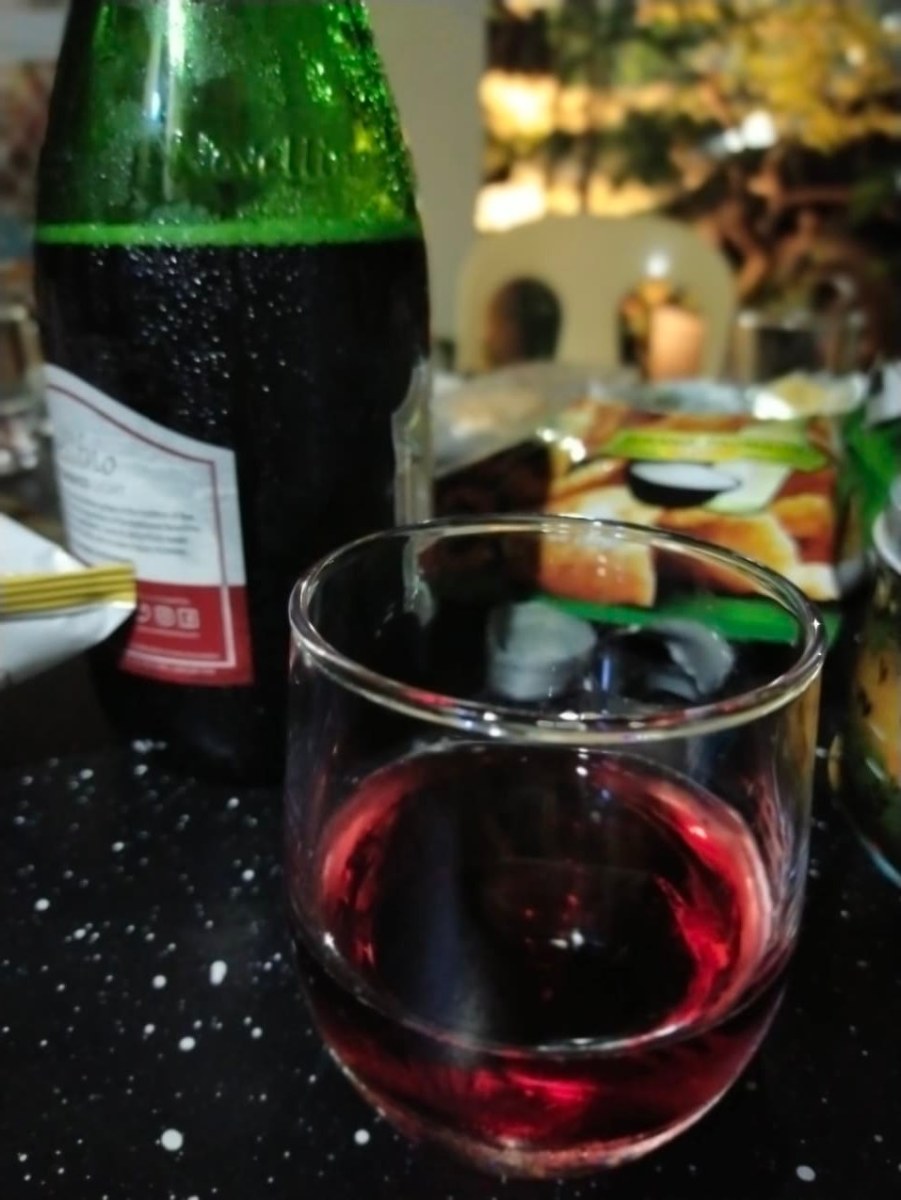10 Fall Beverages to Replace the Pumpkin Spice Latte

Steeped in Lore, Not Syrup
As the leaves turn and the air thickens with the scent of woodsmoke and memory, the pumpkin spice latte continues its annual parade through coffee shops like a crowned monarch of fall. But beneath its frothy reign lies a deeper seasonal truth—one steeped not in trend, but in tradition.
Autumn is a threshold season: a time of harvest and hearth, of ancestral echoes and elemental transformation. It’s when the veil thins, when stories are stirred into simmering pots, and when every sip can become a ritual. The true spirit of fall isn’t found in mass-produced syrups—it’s in the brews that warm the soul, honor the land, and invite us to gather, reflect, and enchant.
These ten beverages offer more than caffeine. They are vessels of ceremony, carriers of lore, and invitations to sensory reverence. Each one evokes a different facet of autumn’s magic—whether through ancient ingredients, folkloric symbolism, or the quiet joy of crafting something sacred and delicious.
So let the pumpkin spice latte rest on its laurels. There are richer brews to be poured, and deeper stories to be told.
Mulled Cranberry-Apple Cider
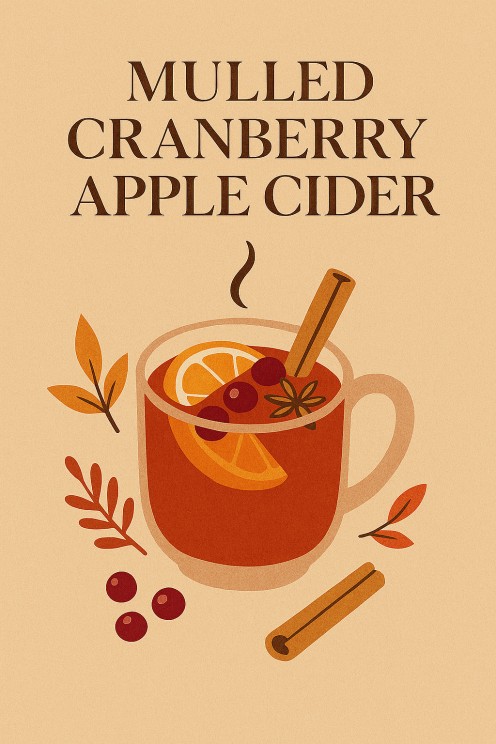
1. Mulled Cranberry-Apple Cider
Tradition: This warming brew traces its lineage to ancient harvest rites and Samhain ceremonies, where cider was more than a beverage—it was a protective offering and communal bond. In Celtic tradition, Samhain marked the end of the harvest and the beginning of the dark half of the year. Bonfires blazed, spirits wandered, and mulled cider—steeped with spices and fruit—was served to honor ancestors and fortify the living against the thinning veil.
In medieval Europe, wassail (from the Old Norse ves heil, meaning “be well”) evolved as a spiced cider ritual to bless orchards and ensure a fruitful crop. Revelers would sing to apple trees, pour cider at their roots, and invoke fertility through fire and song. The addition of cranberries, a later North American twist, brings a tart edge and a protective charm rooted in Indigenous traditions, where the berry was revered for its healing properties and vibrant resilience.
Lore: Apples have long symbolized wisdom, transformation, and the cyclical nature of life—from the mythic fruit of Avalon to the biblical tree of knowledge. Cranberries, with their ruby hue and sharp tang, represent protection, vitality, and the power to preserve. Together, they form a brew that’s both grounding and luminous—perfect for rituals of release, remembrance, and renewal.
Recipe:
-
2 cups apple cider (unfiltered for depth)
-
1 cup pure cranberry juice (unsweetened for tartness)
-
1 orange, sliced into rounds
-
2 cinnamon sticks
-
4 whole cloves
-
3 whole allspice berries
-
Optional: 1–2 oz bourbon or dark rum for ceremonial warmth
Instructions: Combine all ingredients in a heavy-bottomed pot. Simmer gently for 30 minutes, allowing the spices to infuse and the citrus to brighten. Serve hot in earthenware mugs, garnished with a cinnamon stick or orange peel. For ritual use, stir clockwise while naming what you wish to release or protect.
Tahini Hot Chocolate
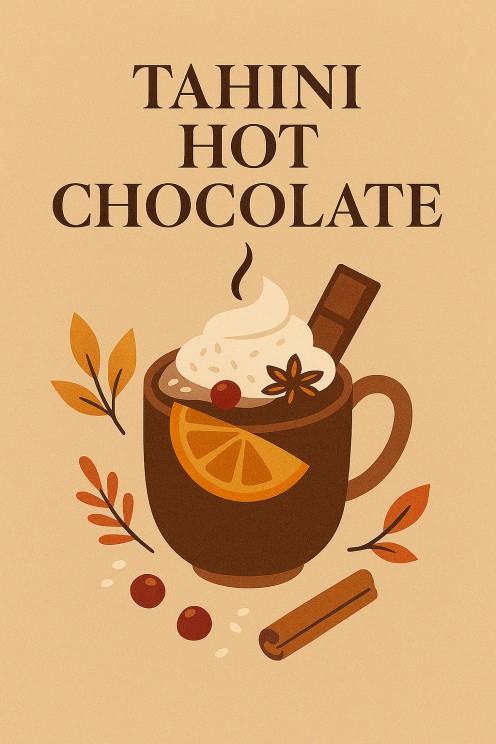
2. Tahini Hot Chocolate
Tradition: This grounding, luxurious blend draws inspiration from Middle Eastern winter drinks that have warmed hearts for centuries. In regions spanning the Levant to Persia, sesame-based beverages like haleem, sahlab, and halva-infused milk were traditionally served during colder months to nourish the body and fortify the spirit. These drinks were often thickened with starches or nut pastes, sweetened with honey or dates, and perfumed with rosewater or spices—each ingredient chosen not just for flavor, but for its symbolic and medicinal resonance.
Tahini, a paste made from ground sesame seeds, has been a staple in Middle Eastern cuisine for over 4,000 years. Ancient Mesopotamians cultivated sesame as one of the earliest oil crops, and it was prized for its richness, longevity, and ceremonial use. In winter, tahini was often blended into warm drinks to provide sustenance, warmth, and a sense of sacred indulgence—especially during long nights and seasonal transitions.
Lore: Sesame seeds have long been associated with immortality, abundance, and divine protection. In Babylonian mythology, sesame wine was served to the gods before the creation of the world. In folklore, the phrase “open sesame” invokes magical access—suggesting that sesame holds the key to hidden treasures and inner nourishment. When paired with cacao, a sacred plant in Mesoamerican traditions symbolizing heart-opening and divine connection, this drink becomes a cross-cultural elixir of grounding and awakening.
Recipe:
-
2 tbsp tahini (preferably stone-ground for depth)
-
1 tbsp unsweetened cocoa powder
-
1 cup coconut milk (or oat milk for earthier tones)
-
1–2 tsp honey (or date syrup for traditional sweetness)
-
Pinch of sea salt (to amplify flavor and ritual contrast)
Instructions: Warm the coconut milk gently over low heat. Whisk in tahini and cocoa powder until smooth and velvety. Add honey and sea salt to taste. For ceremonial use, stir slowly while naming what you wish to nourish or release. Serve in a ceramic cup, optionally garnished with toasted sesame seeds or a dusting of cinnamon.
Maple Chai Latte
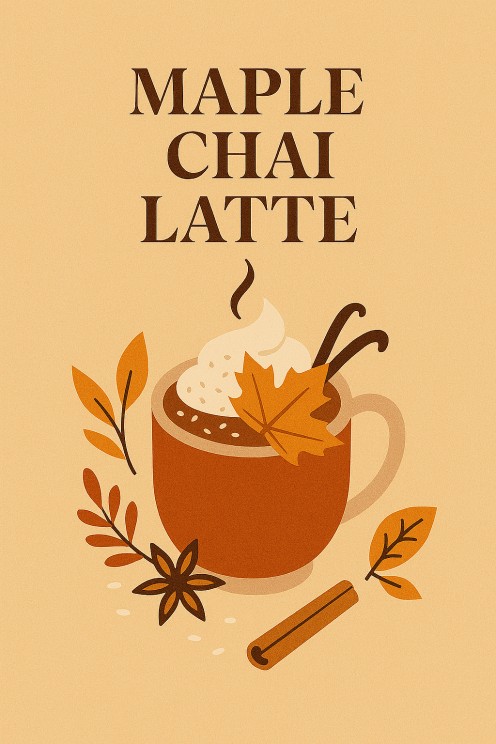
3. Maple Chai Latte
Tradition: This aromatic brew is a cross-continental fusion of two deeply rooted traditions: the spiced warmth of Indian chai and the golden sweetness of North American maple harvests. Chai, derived from the Hindi word for “tea,” has been a cornerstone of Indian hospitality and daily ritual for centuries. Traditionally brewed with black tea, milk, and a blend of warming spices—cardamom, cinnamon, ginger, cloves—it’s more than a beverage; it’s a gesture of welcome, a communal pause, and a medicinal tonic.
Meanwhile, maple syrup has its origins in Indigenous North American practices, where tribes such as the Abenaki and Ojibwe tapped sugar maples and boiled the sap into syrup long before European settlers arrived. Maple tapping was both a seasonal marker and a spiritual act—celebrating the balance between winter’s retreat and spring’s awakening. The syrup was considered a gift from the trees, a sweet medicine that honored the land’s generosity.
By blending these two traditions, the Maple Chai Latte becomes a ceremonial drink that bridges continents and seasons—uniting the fire of spice with the earthbound sweetness of sap.
Lore: Maple trees are symbols of balance, transition, and letting go. Their leaves blaze in autumn, reminding us that beauty often precedes release. In folklore, the maple is associated with generosity, grounding, and the wisdom of cycles. Chai spices, meanwhile, carry their own lore: cinnamon for protection, cardamom for clarity, ginger for vitality. Together, they create a brew that comforts, awakens, and gently nudges us into seasonal transformation.
Recipe:
-
2 chai tea bags (or 1 tbsp loose-leaf masala chai)
-
1 cup almond milk (or oat milk for creamier texture)
-
1 tbsp pure maple syrup (Grade B for deeper flavor)
-
¼ tsp cinnamon
-
¼ tsp vanilla extract
Instructions: Heat almond milk until steaming but not boiling. Steep chai tea bags for 5–7 minutes. Remove bags and stir in maple syrup, cinnamon, and vanilla. Blend or whisk vigorously for froth. Serve in a ceramic cup, optionally garnished with a cinnamon stick or maple leaf motif.
For ritual use, sip slowly while reflecting on what you’re ready to release and what sweetness you wish to carry forward.
Spiced Vanilla London Fog
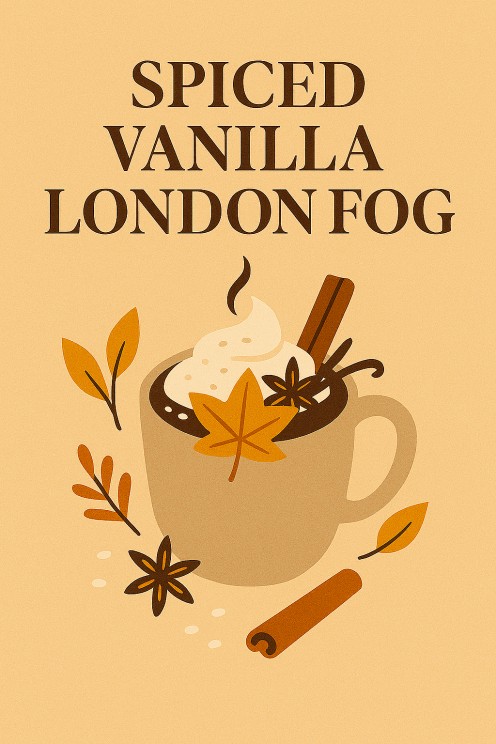
4. Spiced Vanilla London Fog
Tradition: Born from the damp charm of British mornings, the London Fog is a modern ritual with Victorian echoes. While its exact origin is debated—some say it emerged in Vancouver cafés in the 1990s—the drink evokes the spirit of English tea culture: slow, contemplative, and steeped in comfort. Earl Grey, the tea at its heart, dates back to the early 19th century and was named after Charles Grey, the British Prime Minister who allegedly received the blend as a diplomatic gift. Its signature flavor comes from bergamot, a citrus native to southern Italy, which was added to black tea to preserve freshness and elevate aroma.
The London Fog transforms this classic into a creamy, aromatic brew—steamed milk softens the tannins, while vanilla and spice add warmth and depth. It’s a drink for misty mornings, quiet journaling, and ceremonial pause.
Lore: Bergamot, the fragrant oil that defines Earl Grey, has long been associated with emotional clarity and intuitive awakening. In aromatherapy and folklore, it’s said to uplift the spirit, dispel melancholy, and sharpen inner vision—making it a perfect companion for autumn’s introspective mood. Vanilla, meanwhile, symbolizes comfort and sensuality, while cinnamon and nutmeg carry protective and warming properties in many traditions.
Together, these ingredients create a brew that’s both grounding and ethereal—a fog you can sip, a ritual you can hold.
Recipe:
-
1 Earl Grey tea bag (or 1 tbsp loose-leaf)
-
1 cup steamed milk (almond, oat, or whole)
-
¼ tsp vanilla extract
-
¼ tsp ground cinnamon
-
Pinch of nutmeg
Instructions: Steep Earl Grey in ½ cup hot water for 5 minutes. Meanwhile, steam or gently heat the milk. Remove the tea bag and combine with milk, vanilla, cinnamon, and nutmeg. Whisk or blend for froth. Serve in a porcelain cup, optionally garnished with a lavender sprig or bergamot zest.
For ritual use, sip slowly while reflecting on what clarity you seek or what fog you’re ready to release.
Spiced Orange-Cinnamon Cider
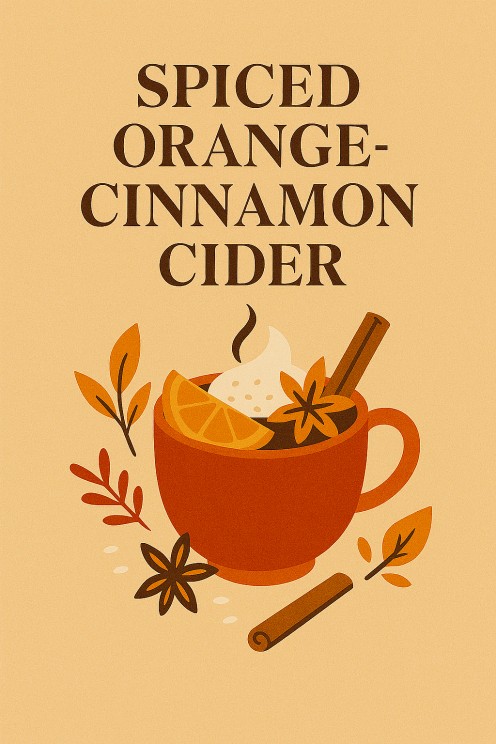
5. Spiced Orange-Cinnamon Cider
Tradition: This golden brew is a citrus-kissed evolution of traditional wassail, a festive drink with deep roots in Old English and Norse winter rites. Wassail—derived from the Old Norse ves heil, meaning “be well” or “be in good health”—was originally a mulled ale or cider served during Yule and Twelfth Night celebrations. It was more than a drink; it was a ritual of blessing, sung to orchards to ensure a fruitful harvest and shared among revelers to invoke communal joy and protection.
During Yule, the longest night of the year, wassail was poured into the earth or offered to trees as a libation to awaken the sleeping spirits of nature. Over time, the drink evolved to include apples, spices, and citrus—especially oranges, which became prized winter luxuries in Europe after trade routes expanded in the 17th century. Their bright flavor and sun-like color made them symbolic of renewal, hope, and the returning light.
This spiced cider version, enriched with orange juice and honey, carries forward that tradition—offering warmth, brightness, and a touch of ritual sweetness to modern winter gatherings.
Lore: Oranges have long symbolized the sun, vitality, and rebirth. In winter rites, they were often used as offerings or decorations to represent the promise of light returning after the solstice. Cinnamon and cloves, both ancient trade spices, were believed to ward off illness and invite prosperity. Honey, revered across cultures as a sacred food, adds not only sweetness but a golden resonance—echoing the warmth of hearth and sun.
Together, these ingredients form a brew that’s both comforting and ceremonial—a drink to sip slowly, share generously, and stir with intention.
Recipe:
-
2 cups apple cider (preferably unfiltered for depth)
-
1 cup fresh orange juice (or blood orange for added drama)
-
2 cinnamon sticks
-
4 whole cloves
-
2 tbsp honey (or maple syrup for a deeper note)
-
Optional: orange peel or dried orange wheel for garnish
Instructions: Combine all ingredients in a heavy-bottomed pot. Simmer gently for 20–30 minutes, allowing the spices to infuse and the citrus to brighten. Serve hot in earthenware mugs, garnished with orange peel or a cinnamon stick. For ritual use, stir clockwise while naming what light you wish to welcome into the season.
Vegan Mayan Drinking Chocolate
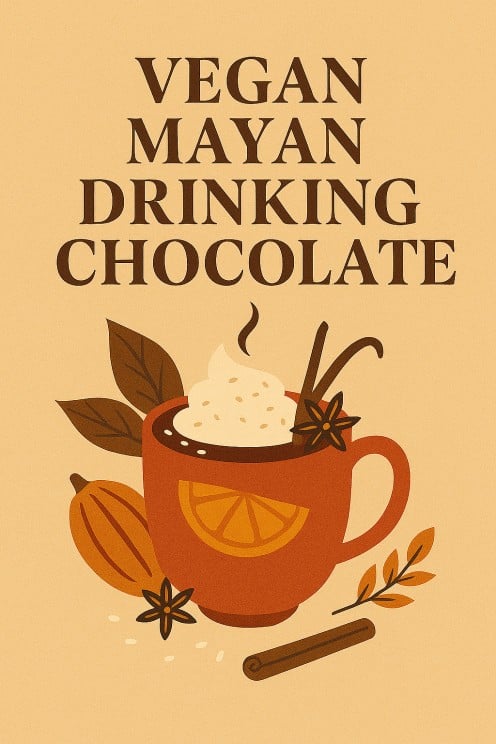
6. Vegan Mayan Drinking Chocolate
Tradition: This velvety elixir draws its soul from the ancient cacao rituals of the Maya and Aztec civilizations, where chocolate was not a dessert but a divine medium. Long before it was sweetened and commercialized, cacao (Theobroma cacao, meaning “food of the gods”) was consumed as a bitter, spiced beverage—reserved for sacred ceremonies, royal feasts, and spiritual offerings.
Among the Maya, cacao was believed to be a gift from the gods, used in marriage rites, funerary rituals, and divinatory practices. It was often mixed with water, chili, and maize, then poured from vessel to vessel to create a frothy texture—symbolizing breath, spirit, and transformation. The Aztecs, too, revered cacao as currency and sacrament. Warriors drank it before battle; priests offered it to deities; emperors sipped it from golden cups.
This modern vegan version honors those traditions—blending dark chocolate with warming spices and plant-based milk to create a brew that’s both heart-opening and grounding.
Lore: Cacao was sacred not only for its rarity but for its energetic properties. It was believed to open the heart, awaken intuition, and connect the drinker to divine wisdom. Cinnamon and nutmeg, introduced later through global spice routes, carry their own lore: cinnamon for protection and vitality, nutmeg for vision and mystery. Cayenne adds fire—echoing the ancient use of chili to stimulate the senses and stir the spirit. Vanilla, native to Mesoamerica and once considered more valuable than gold, brings sweetness and sensuality to the mix.
Together, these ingredients form a brew that’s ceremonial, sensual, and steeped in myth.
Recipe:
-
2 oz dark chocolate (70% or higher, preferably stone-ground or ceremonial-grade)
-
1 cup oat milk (or almond milk for a lighter texture)
-
¼ tsp ground cinnamon
-
⅛ tsp ground nutmeg
-
Pinch of cayenne pepper (adjust to taste)
-
¼ tsp pure vanilla extract
-
Optional: maple syrup or date syrup for sweetness
Instructions: Warm oat milk gently over low heat. Add chopped chocolate and whisk until melted and smooth. Stir in spices and vanilla. Continue whisking until velvety and slightly frothy. Serve in a clay or ceramic vessel, optionally garnished with cacao nibs or a cinnamon stick.
For ritual use, sip slowly while reflecting on what you wish to open, release, or honor. This is a drink for heart-centered intention, ancestral connection, and quiet power.
Honey Miso Latte

7. Honey Miso Latte
Tradition: This unexpected yet deeply comforting brew is a modern homage to Japan’s ancient fermentation rituals—where miso, sake, soy sauce, and pickled vegetables have long been revered not just as food, but as cultural and spiritual anchors. Miso, made from fermented soybeans, rice or barley, and salt, dates back over 1,300 years to the Asuka period. Originally introduced from China, it quickly became a staple in Japanese monastic cuisine, valued for its umami depth, nutritional potency, and meditative preparation.
Fermentation in Japanese tradition is more than preservation—it’s transformation. It reflects patience, seasonal rhythm, and the quiet alchemy of time. Miso, in particular, was considered a sacred food in Shinto and Buddhist practices, often used in temple meals and healing broths. Its preparation was ritualized, its aging respected, and its consumption believed to fortify both body and spirit.
This latte reimagines miso’s savory richness in a sweet, frothy context—blending it with honey and steamed milk to create a drink that’s both grounding and ethereal. It’s a sip of resilience, a nod to ancestral wisdom, and a gentle indulgence for modern rituals.
Lore: Miso symbolizes transformation, resilience, and the beauty of slow change. It’s born of fermentation—a process that turns simple ingredients into something complex, nourishing, and enduring. In Japanese folklore, fermented foods were believed to carry protective and restorative energies, especially during seasonal transitions.
Honey, meanwhile, has its own mythic lineage. Across cultures, it’s been offered to gods, used in embalming rites, and revered as a symbol of sweetness, preservation, and divine favor. Together, miso and honey form a duality: salt and sweet, earth and light, tradition and innovation.
Recipe:
-
1 tsp white miso paste (mild and slightly sweet)
-
1 tbsp honey (or yuzu-infused honey for citrus brightness)
-
1 cup steamed milk (oat milk for a nutty undertone, or soy for thematic resonance)
Instructions: Warm the milk gently until steaming. In a separate bowl, whisk miso paste and honey until smooth. Slowly blend into the milk, whisking or frothing until velvety. Serve in a ceramic cup, optionally garnished with a sprinkle of toasted sesame seeds or a drizzle of extra honey.
For ritual use, sip slowly while reflecting on what you’re fermenting in your own life—what’s transforming quietly beneath the surface, and what sweetness you’re ready to embrace.
Cinnamon Pear Cider
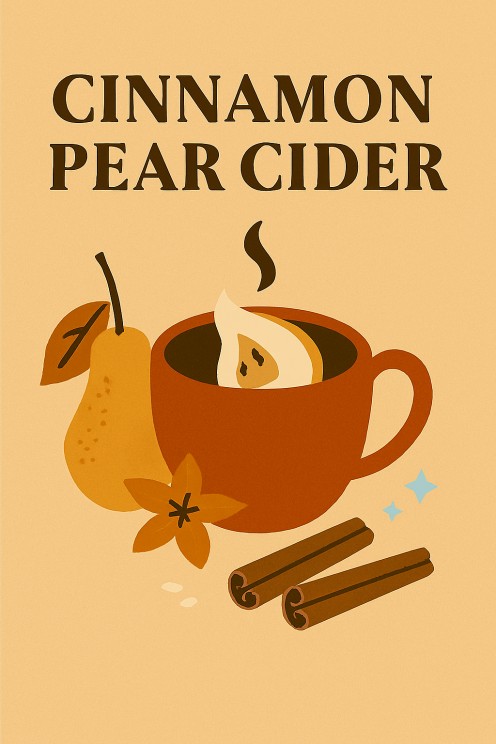
8. Cinnamon Pear Cider
Tradition: Though apples often steal the spotlight in autumnal rituals, pears carry their own quiet magic—subtle, elegant, and steeped in ancient lore. In many cultures, the pear is a symbol of wisdom, femininity, and gentle abundance. Its soft flesh and curving form have long been associated with fertility and grace, making it a sacred fruit in seasonal rites of healing and reflection.
In European folklore, particularly Celtic tradition, pear trees were revered as symbols of restoration and intuition. They were planted near sacred wells and healing sites, believed to offer protection and insight to those who sought their shade. Unlike the fiery apple, the pear was seen as a fruit of quiet revelation—ripening slowly, offering sweetness only when truly ready.
This spiced cider honors that lineage, transforming pear juice into a warm, aromatic brew that soothes the senses and invites introspection. Cinnamon and star anise add depth and ritual spice, while lemon brightens the blend with a whisper of clarity.
Lore: In Celtic myth, the pear tree was linked to the goddess of healing and renewal. Its fruit was said to restore vitality and awaken inner knowing. Cinnamon, used in ancient rites across Asia and the Mediterranean, symbolizes protection and warmth. Star anise, with its star-shaped geometry, evokes celestial guidance and sacred geometry. Lemon, sharp and luminous, represents purification and the return of light.
Together, these ingredients form a brew that’s both comforting and clarifying—a drink for twilight hours, quiet journaling, or ceremonial pause.
Recipe:
-
2 cups pear juice (preferably fresh or unfiltered for depth)
-
2 cinnamon sticks
-
1 whole star anise
-
Splash of fresh lemon juice (to taste)
-
Optional: honey or maple syrup for added sweetness
Instructions: Combine pear juice, cinnamon, and star anise in a small pot. Simmer gently for 20–25 minutes, allowing the spices to infuse. Remove from heat and stir in lemon juice. Serve warm in a ceramic cup, optionally garnished with a thin pear slice or a twist of lemon peel.
For ritual use, sip slowly while reflecting on what wisdom you’re ready to receive, and what sweetness you’ve earned through patience.
Lemon-Ginger-Honey Tonic
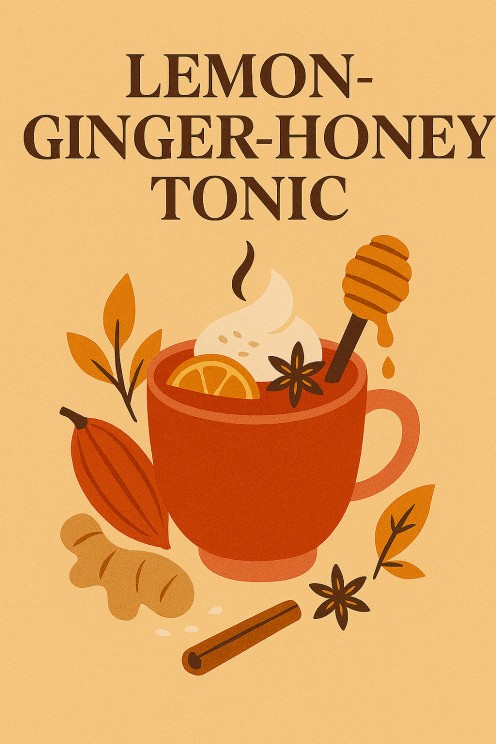
9. Lemon-Ginger-Honey Tonic
Tradition: This golden brew is a timeless healer—rooted in folk medicine traditions that span continents and centuries. From Ayurvedic elixirs in India to herbal infusions in Europe, ginger, lemon, and honey have long been revered as elemental allies in seasonal transitions, illness recovery, and spiritual cleansing.
In traditional Chinese medicine, ginger (sheng jiang) is considered a warming herb that stimulates circulation, dispels cold, and harmonizes the stomach. In Ayurveda, it’s known as vishwabheshaja—“the universal medicine”—used to ignite agni (digestive fire) and restore balance. Honey, meanwhile, has been used as a sacred food and medicinal salve since ancient Egypt, where it was offered to gods and embalmed into tombs. Lemon, introduced to Europe via Arab traders, became a staple in monastic gardens and plague remedies—valued for its cleansing properties and bright vitality.
Together, these ingredients form a brew that transcends borders—a ritual of warmth, clarity, and resilience passed down through generations.
Lore: Ginger is fiery, protective, and awakening. In folklore, it’s said to banish negativity and stir courage. Honey, golden and viscous, symbolizes preservation, sweetness, and divine favor. In Greek myth, it was the food of the gods; in Celtic lore, a gift of the bees—creatures linked to prophecy and the soul. Lemon, with its sharp brightness, represents purification, renewal, and the return of light after darkness.
This tonic is more than a remedy—it’s a spell for clarity, a sip of solar strength, and a gentle invocation of inner fire.
Recipe:
-
1–2 inches fresh ginger root, sliced thin
-
2 cups water
-
Juice of ½ lemon (or more to taste)
-
1–2 tsp raw honey (or date syrup for a deeper note)
-
Optional: pinch of cayenne for added fire
Instructions: Boil ginger slices in water for 10–15 minutes, until fragrant and golden. Remove from heat and stir in lemon juice and honey. Strain if desired. Serve warm in a ceramic cup, optionally garnished with a lemon wheel or ginger slice.
For ritual use, sip slowly while naming what you wish to clear, protect, or illuminate. This is a brew for dawn rituals, seasonal transitions, and moments of quiet restoration.
Fleur de Sel Hot Chocolate
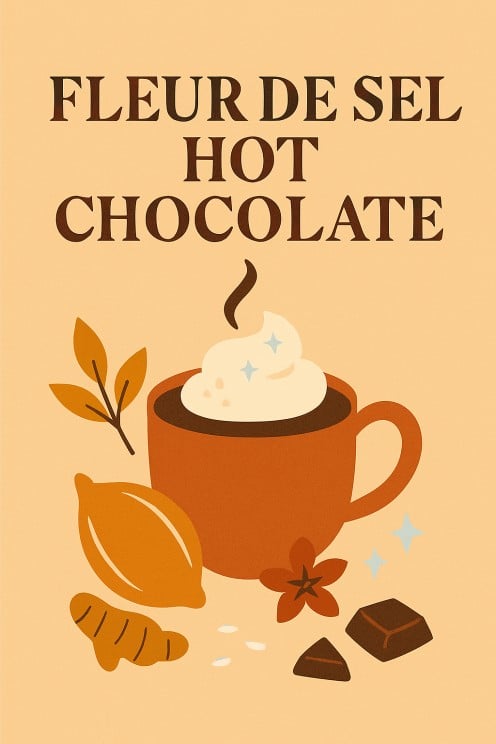
10. Fleur de Sel Hot Chocolate
Tradition: This decadent brew draws its lineage from the French tradition of chocolat chaud, a ceremonial drink that dates back to the 17th century court of Versailles. Unlike its modern powdered counterpart, French-style drinking chocolate is thick, velvety, and unapologetically rich—made by melting real chocolate into milk and often served in porcelain cups with silver spoons. It was a luxury reserved for aristocrats, philosophers, and poets, sipped slowly in salons and boudoirs as a gesture of refinement and sensual pleasure.
The ritual of drinking chocolate spread across Europe after cacao was introduced from Mesoamerica, where it had long been revered as a sacred substance. In France, it became a symbol of sophistication and indulgence, often paired with spices, cream, and a pinch of salt to heighten its complexity. Fleur de sel, harvested from the surface of salt ponds in Brittany, was prized not only for its delicate flavor but for its purity—making it a natural companion to chocolate’s earthy depth.
Lore: Salt, in myth and ritual, is a purifier and a preserver. It wards off evil, sanctifies space, and enhances the sweetness of life. Fleur de sel—“flower of salt”—is especially symbolic, evoking the ephemeral beauty of nature and the alchemical transformation of water into crystal. Cinnamon, meanwhile, carries warmth and protection, often used in winter rites to stir the spirit and awaken desire. Chocolate itself, once considered divine by the Maya and Aztec, is a heart-opener and mood-lifter—an edible invocation of joy and connection.
Together, these ingredients form a brew that’s sensual, sacred, and steeped in history—a drink for twilight hours, ceremonial indulgence, and quiet celebration.
Recipe:
-
2 oz dark chocolate (70% or higher, preferably French or ceremonial-grade)
-
1 cup whole milk (or oat milk for a velvety vegan version)
-
Pinch of fleur de sel (or flaky sea salt)
-
¼ tsp ground cinnamon
-
Optional: whipped cream, marshmallows, or a dusting of cocoa powder
Instructions: Warm the milk gently over low heat. Add chopped chocolate and whisk until melted and smooth. Stir in cinnamon and fleur de sel. Continue whisking until thick and velvety. Serve in a porcelain or ceramic cup, topped with whipped cream or marshmallows. Garnish with a sprinkle of salt or a cinnamon stick for added ritual flair.
For ceremonial use, sip slowly while reflecting on what sweetness you wish to amplify and what energies you’re ready to cleanse.
Final Thoughts
Each of these brews is more than a seasonal indulgence—they are invitations to ritual, to remembrance, to rhythm. In a world that rushes toward novelty, these drinks ask us to return to the ancient pace of simmering, steeping, and savoring. They carry the weight of tradition and the lightness of transformation, blending ancestral wisdom with modern comfort.
Whether you’re hosting a harvest feast beneath flickering lanterns or journaling by candlelight with the wind whispering at your window, let your cup become a vessel of warmth and wonder. Let it hold memory like honey, stir myth into milk, and steep intention into every sip. These are drinks to be shared, honored, and remembered—not just for their flavor, but for the stories they awaken.
So, as the leaves fall and the veil thins, choose your brew with care. Let it be your companion in reflection, your offering to the season, and your quiet rebellion against the ordinary.
Sources
-
Wikipedia contributors. (n.d.). Wassail. Wikipedia. https://en.wikipedia.org/wiki/Wassail
-
WhyChristmas.com. . (n.d.). The history of wassailing and mulled wine. https://www.whychristmas.com/customs/wassailing
-
Deeper Japan. (n.d.). Fermentation food culture in Japan. https://www.deeperjapan.com/fermentation-food-culture-in-japan
-
Badeel Treats. (n.d.). Exploring the history and cultural significance of tahini. https://badeeltreats.com/en/blogs/the-blog-1/exploring-the-history-and-cultural-significance-of-tahini
-
Patidar Rajwadi Chai. (n.d.). The origins of chai: From ancient traditions to modern trends. https://patidarrajwadichai.com/the-origins-of-chai-from-ancient-traditions-to-modern-trends
-
Wikipedia contributors. (n.d.). Earl Grey tea. Wikipedia. https://en.wikipedia.org/wiki/Earl_Grey_tea
-
Lauren G. Koch. (2023). The return: The symbolic essence of oranges during Yule. https://www.laurengkoch.com/post/oranges_in_yule_traditions
-
Aztec Mythology Worldwide. (n.d.). The rituals of the sacred cacao: Chocolate in Aztec ceremonies. https://aztec.mythologyworldwide.com/the-rituals-of-the-sacred-cacao-chocolate-in-aztec-ceremonies
-
Number Analytics. (n.d.). Cultural significance of miso in Japan. https://www.numberanalytics.com/blog/cultural-significance-of-miso-in-japan
-
Connolly Cove. (n.d.). Symbols and significance of sacred trees in Celtic beliefs. https://www.connollycove.com/sacred-trees-in-celtic-beliefs
-
LocatePlease. (n.d.). The ancient power of red onion, garlic, ginger, lemon & honey: A time-tested tonic for vibrant health. https://locateplease.com/the-ancient-power-of-red-onion-garlic-ginger-lemon-honey-a-time-tested-tonic-for-vibrant-health
-
Wikipedia contributors. (n.d.). Fleur de sel. Wikipedia. https://en.wikipedia.org/wiki/Fleur_de_sel
This content is accurate and true to the best of the author’s knowledge and is not meant to substitute for formal and individualized advice from a qualified professional.
© 2025 Erin K Stewart

